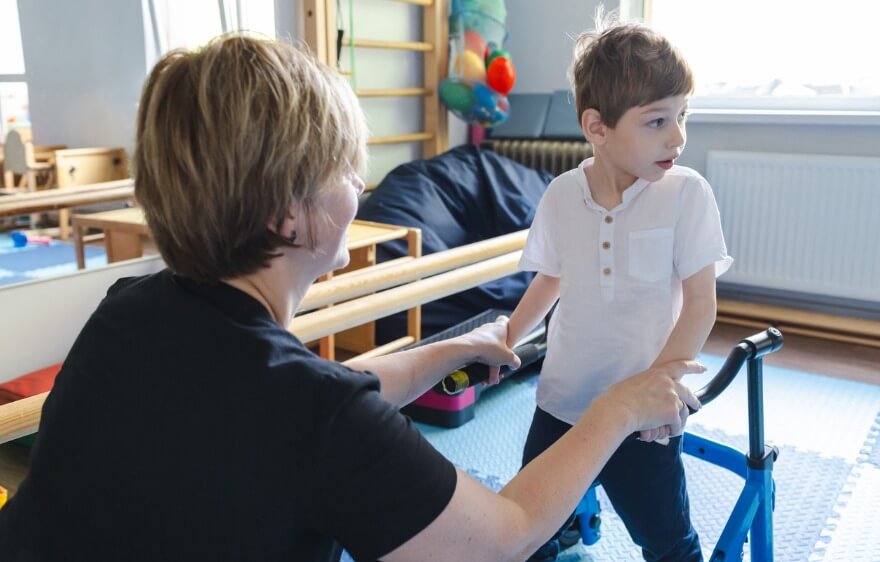We are here to discuss our recent journey through the complex maze that is video streaming platforms. There are frequent discussions on SIG 18 about what platform people are using, so I know we’re not the only ones out there facing this. We thought we’d share our path and current status for your reading pleasure and contribute to the greater discussion.
Before we get started, though, a little disclaimer: we’re not making recommendations and we’re not paid by any of these guys to say anything. This is just our experience and our current thoughts.
Now then . . .
Picture this: a new client eagerly clicks on a meeting link with the expectation that they’re about to meet their new speech-language pathologist via video conference. This client is excited to improve their communication issue through therapy and do it all online from the comfort of their own home or office. But, instead of that link connecting them to a screen where they meet their cheery SLP, everything turns dark. Only the audio and chat features seem to be working. Now picture a third person typing IMs during the session, trying to help both client and clinician navigate the platform. After a few minutes of troubleshooting, the SLP suggests they just use the audio portion to discuss the client’s speech needs.
First impression? Not good.
Worst part? This actually happened to us.
What platform were we using when this infamous session happened?
GoToMeeting
We used GoToMeeting for a year and by the time this happened, we were VERY over it. True, it is very affordable (free!) and has many features we like (screen sharing, shared control, text chat), but it’s also been an ongoing challenge. Some of the problems we experienced were mysterious and spread across several users. Sometimes it was easy to access meetings, sometimes not. Sometimes, meetings even disappeared from our schedule. If you hadn’t used it in over a month, it was easy to forget what to do . . . the user interface wasn’t intuitive to clinicians or clients, and it changes frequently.
We hated it because of scheduling issues. Granted we were using one interface for more than one user. Not the recommended method, but we’re trying to have a scheduler and . . . anyway. We felt constantly challenged by the system “undoing” work when choosing dates and times. This was such a problem that she had to repeatedly check each scheduled meeting to ensure it was correct. Every once in a while she wouldn’t catch the error and someone would receive a meeting invitation for the wrong day, time, or timezone. This issue alone added countless hours of labor and frustration, not to mention unprofessional embarrassments with clients.
That infamous session was the final straw. It was time to find a new video-conferencing platform. We wanted our clients to feel that online sessions were truly as easy as they could be! I had recently written a post called 8 Essential Video Conferencing Features for Telepractice, so we used that as a checklist for what our new platform should look like. We had some additional items on our wishlist as well: 1) competitive pricing, 2) good quality, and 3) solid support. So, the search began.
We found several websites with software ratings and reviews. Product websites that bothered to have testimonials were appealing because they showed that real people were happy. But to be honest, there were so few ratings and testimonials that we felt they were pretty unreliable. It would be so great to wave a magic wand and be able to see the data on how many technical hiccups users of each software have experienced! No luck, though.
When it came to price, we found that, since video-conferencing is used for so many different kinds of meetings in various industries, the costs vary greatly. This type of software can range from free to $300/month and up to thousands of dollars, depending on your needs. Most of the software we researched had several pricing plans to choose from, and to add confusion, some companies do not advertise their prices on their website (we assume this is because they want to talk to you and collect your information, which we found to be an annoyingly slow way to find answers). In the end, Zoom and Lync were on the low end of pricing, and Auralink, SecureVideo, and VSee were much more costly (to name just a few). Many of the lower-end options didn’t have all of the useful features we were looking for, so we eliminated them right away. But what about some other options on the lower end of the cost spectrum?
Lync
For my work with school districts, I use Lync. I love it. It has a great interface, easy-to-use features, and good audio and video. My experience has been with the closed-loop subscriber version, which unfortunately won’t work for our private practice client needs because each client is not a subscriber within the closed loop. We thought that perhaps one of their new versions with great flexibility and affordable monthly rates might work for us, though. We thought we hit the jackpot when we found out that it would only cost us $2/month and had all the features we needed. BUT!
Customer service. We spent many fruitless hours on the phone with Microsoft trying to figure out how to even see the platform. Downloading a free trial was insanely difficult. There were emails back and forth and every time we thought we had something figured out, nada. In the end, we abandoned Lync purely because the customer service was SO bad. We decided that If they can’t provide good enough customer service to sell us their product, they probably wouldn’t be very helpful down the line.
Our experience with Lync solidified our feeling that we really wanted a great tech support system from whatever software we chose. This lead us to . . .
Zoom
Zoom hit it out of the customer service park. Calling their helpline connected us with a real person right away. We had a few questions about pricing and features and they were answered thoroughly. Then we were connected to a regional representative who let us know about discounts in our area. Ultimately, we decided to purchase Zoom. They were very helpful in sending us the information we needed to familiarize new clients and clinicians with the software as well. Super support!
But what about price? Well, they have a few pricing options. We decided to go with the Pro Plan, which is $9.99 per month per “host” for up to 9 hosts (clinicians) and 25 participants (clients). We felt like this was a good deal for our little practice, but the total cost will of course vary depending on how many clinicians you have.
So, for now, we’re at a resting point in our quest to find the perfect teleconferencing platform for telepractice. That resting point is called Zoom. What does that mean? It means that we’ve had one successful session, and we’re happy with features and support so far. Baby steps. We’ll have a better idea of how it works once we’ve put the program through its paces. This might be the end of the road, or it might just be a Band-Aid. Only time will tell. Stay tuned for the update!
And, as always, leave your comments and share your experiences below. We’re all in this together, right?






